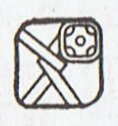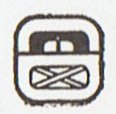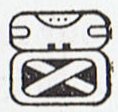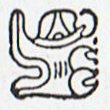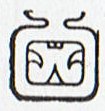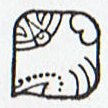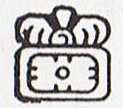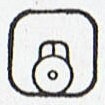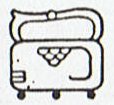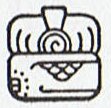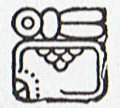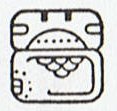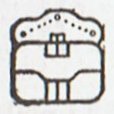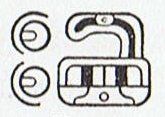6. On the other hand the glyphs in our example text seem to measure out months with 30 days in each:
The dry old calabash (toa) in the center of 'June' could refer to summer solstice (when Sun 'dies' for the first time) and the waterfilled hipu in Eb7-2 could refer to winter solstice. Counting the distance between them it becomes 180 days. The 'tree of Jupiter' in Eb7-9 is sinking low and maybe the picture and idea is a parallel to 14 Kankin, 'skeleton ribs' (another way to say 'old calabash'). Maya-land lies north of the equator and I do not need to use quotation marks around our names for the months. However, they had only 20 days per month in the calendar which I am using for comparison - like the Polynesians on Gilbert Islands - and our names will therefore be inappropriate anyhow. It appears to be meaningful to apply 'planetary colours'. For instance is 5 Tzek and 12 Ceh the beginning and end of what I read as 8 months of 'summer':
At Mercury in 8 Mol we can see a double-ring sign at bottom and above is a short vertical straight line which could indicate the division of the sky dome in 2 parts. The glyph is unusually simple to be a Maya sign. 160 = 2 * 80 and 240 = 3 * 80, and with 16 Pax (Jupiter) the final is reached, because 4 * 80 = 320 = 16 * 20. Yet, the calendar continues with 2 more months and 5 extra days during which a new 'fire' probably is born. 19 is a Sun-day number. Jupiter in Eb7-9 is illustrated by a 'tree' sinking low, but the 'skeleton ribs' in 14 Kankin are coloured by Mars. 280 = 10 months with 28 days in each, and it must be a day of Mars because in next month comes the 'owl', 15 Moan, a month of Mercury. The 2nd half of the Maya summer has rain clouds hanging in the sky (the inverted triangles with 3 + 2 + 1 = 6 'drops'). 4 * 6 = 24 agrees with the end of summer as day number 240. Sun 'dies' first at midsummer, because then the rainy season arrives. He 'dies' a second time when summer is ending, with 13 Mac (and where 10 * 26 = 260). And he 'dies' a third time when the full measure 16 months is reached. We can see the open 'flare' at the top of 16 Pax, which resembles the open 'flare' at the top of 5 Tzek. These are probably meant to illustrate the 'holes in the sky' through which Sun can enter and leave. Sun 'dies' at points in time which are multiples of 80 days. |
|||||||||||||||||||||||||||||||||||||||||||||||||||||||||||||||||||||||||||||||||||||||||||||||||||||||||||||||




